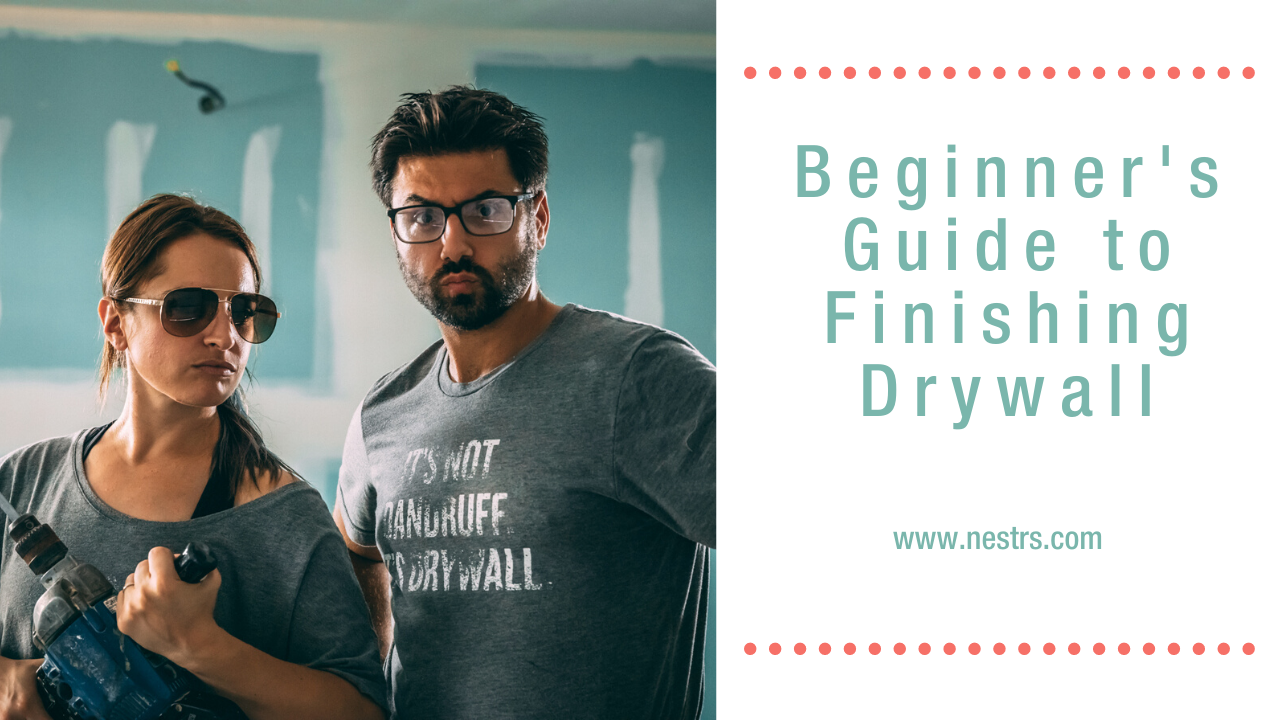
22 Apr How To Finish Drywall For Beginners
This post is a paid collaboration with Lowe’s Home Improvement. All opinions are our own. Thanks for supporting our little online corner of the world!
In our last post, we taught you how to hang drywall. Now, Nick is walking us through how to finish drywall like a pro! You’re going to want to check out the hanging post if you haven’t already. We talk all about nail pops, butt joints, and tough-to-cut-around outlets.
But, in case you already did and you’ve got unfinished drywall hanging I won’t stall any longer.
Shop For Everything You’ll Need to Finish Your Drywall at Lowes. Links to What You’ll Need are Listed Below:
- Step Stool
- Marshalltown Ball Mixing Arm
- Ajax Dish Soap
- Marshalltown 6″ Taping Knife
- Warner 10″ Taping Knife
- Blue Hawk 12″ Taping Knife
- Stanley Screwdriver
- Sheetrock Brand All-Purpose Drywall Joint Compound
- Sheetrock Plus 3 Lightweight Drywall Mud
- ProForm Paper Tape
- Marshalltown Drywall Mud Pan
- 10-amp Corded 1/2-in Keyed Corded Drill
- Utilitech Extension Cord
- Gator Pole Sander
- Gator Drywall Sanding Screen
- 3M Sanding Sponge
Or click here to shop the tools and materials for this project!
What is Drywall?
Drywall is all around you! Pretty much anywhere you look -there is drywall! Drywall is used to make nearly all the walls you come in contact with.
Drywall is incredibly durable, it’s easy to install, and even easier to repair. You’ll learn how to do both here in our drywall series!
Back in the day, walls were created by applying layer after of layer of plaster over wooden support strips called laths. This application process took a ton of time and wasn’t efficient.
So although hanging and finishing drywall take a bit of know-how, it’s nothing like the process of creating walls with plaster and lath!
The History of Drywall
Drywall has had many names: plasterboard, gypsum board, and wallboard.
Augustine Sackett received a patent in 1894 for the Sackett board, which would later be called the gypsum board.
Working its way into the market as the “dry” alternative to “wet” plaster and lath, gypsum board continued to grow stronger as manufacturing processes were developed and improved. This is where we get the term drywall.
If you read part 1 of our How to Drywall series you’ll see how much easier installing drywall is over manually nailing in several lath strips so that you have a foundation for manually applying several layers of wet and messy plaster. Yikes!
How is Drywall Made?
Drywall is made from gypsum, which is an evaporite mineral. Gypsum is mined and crushed. Gypsum is water-soluble but demonstrates retrograde solubility -which just means that when it’s heated it loses water and becomes plaster.
So, gypsum is heated and its naturally occurring water is removed. It is then mixed with additives and hydrated and becomes slurry. The slurry of gypsum is then moved to drying chambers between the two sheets of paper we see on drywall when we purchase it at a store.
Drywall is a baller product. It’s fireproof, inexpensive to make, isn’t soundproof but is sound dampening, and isn’t asbestos but acts like asbestos -so it doesn’t have the same health hazardous as asbestos has. Win!
What is Drywall Used For?
Drywall is used for interior walls and ceilings.
There are four types of drywall, all better suited for different uses:
Mold Resistant Drywall: This type of drywall is covered with fiberglass instead of paper, which gives it resistance to mold and mildew. This type of drywall is becoming more and more popular among builders and is becoming even more popular than standard drywall. When installing this kind of drywall more precautions are needed due to the fiberglass.
Regular Drywall: Regular drywall comes in different sizes and thicknesses. It is the kind of drywall is that we mentioned earlier in the post. It’s crushed and mined gypsum that is developed into a slurry that is then covered by cellulose paper on the front and backside.
Moisture Resistant Drywall: This kind of drywall has a green coating that makes it water-resistant, but not waterproof. Installing moisture-resistant drywall in areas like kitchens, bathrooms, and laundry rooms is always a good idea. It is pricier than mold-resistant and regular drywall but is well worth it.
Fire Resistant/Type X: This type of drywall is made of non-combustible fibers and has to pass tests to receive a Type X rating. Some building codes require Type X drywall because of its higher fire rating.
This post is all about finishing drywall -and to finish your drywall after it’s hung you must apply mud to drywall joints. There are two kinds of drywall mud you can purchase at the store.
Related blog: 7 Convincing Reasons Why Your Basement Needs Glass Block Windows
Premixed
The premixed compound is a compound that’s already ready to go. You can purchase it in a bucket and it’s smooth and creamy and ready to be applied to your drywall joints.
But when you go to purchase premixed mud you’ll notice there are three different types:
All-purpose mud: This type of mud is good for newbies. Once applied it takes a few hours to dry depending on the temperature of the space and its humidity levels.
Topping mud: Topping mud is used as its name suggests the topcoat for your drywall joints. Its adhesion properties aren’t as high as all-purpose mud so it’s not to be used for your first and second coats. It dries a bright white color which makes it great for walls that will be painted a lighter color. We also use Topping mud for our final coats on joints.
Lightweight All-purpose mud: This type of mud also dries bright white in color (making it a great choice if you plan on painting the walls a light color). Nick usually uses All-purpose for his first coat and then switches to Lightweight for his second and third coats. Because it’ lightweight it dries a bit faster than All-purpose.
Powdered
Powdered mud has chemicals in it that will start reacting when water is added. While this product shrinks less when it dries it dries MUCH faster than All-purpose mud and, therefore, should be used when you have more experience working with mud. We use powdered mud when we’re on a tight timeline, to pre-fill large gaps, or to repair crumbled corners before we start the finishing process.
You can purchase timed drywall mud or easy-to-sand setting mud.
Time drywall mud lists on the packaging the length of working time you have before the mud starts to set. You can choose between 5-minute, 20-minute, or longer setting times. Only mix as much as you need. You can always make more batches as you go.
You can choose an easy-to-sand powdered mud which makes the sanding process MUCH easier.
Need a Little Help with Renovating? Contact Us For Some Airbnb Renovations Consulting
Finishing Is An Art
Ok, to be honest, if you really want to improve your finishing skills you gotta check out this video. We outline the steps to finishing in the notes for the video -that way you can jump right to the stuff you need. Nick walks you through a ton of tips and tricks to make your walls perfect. Reading this blog post will help -watching the video will get you closer to being a pro!
Step 1: Protect Yourself and the Floor
Mudding can get messy! After you have hung all your drywall you need to not only protect the floors but also yourself.
If we’re being honest, we don’t ALWAYS protect the floors. It can be tempting especially if the current floors are subfloors or floors that have yet to be finished.
But, when splatters of mud end up on the floor it will be a pain in the you-know-what to get it cleaned up. If nothing else, it’ll be a pain to get your floor smooth again so, if they’re not finished, they’re ready to be finished.
So, do as we say -maybe not as we do all the time. 😉
All you need to do to protect your floors is lay down a paint cloth, plastic, or cardboard around your work area.
To protect yourself, wearing eye protection will go a long way!
Step 2: Prep Your Mud
If you want a beautiful finishing job you need to start with beautiful mud.
That’s right. Mud can be beautiful.
Nick’s first of many trips for you when it comes to prepping your mud is to add a bit of soap to the bucket. This smooths out any air bubbles and makes your mud peanut butter perfect. It’ll be easier to work with and look great on the wall.
Step 3: Taping
Nick prefers working with a metal drywall pan. Hey, when you’ve been doing something for 18 years you like what you like!
Using a 6” taping knife, grab as much mud as you’re comfortable working with. You’ll start by mudding the entire length of a wall. You don’t want to stop and start in random places. Apply mud to the factory seams first. Run your 6” knife sideways all the way down the wall. This gets the mud into the ravine of the seam. Using the mud as your “adhesive” simply apply the tape to your run of mud along the seams.
Apply a decent amount of pressure using your knife to clear out the excess mud from under the tape. This will also fill the seam. Do your best not to crease the tape.
Then attack the butt joints.
Finally, apply tape to your corners. With corners, there is one extra step. You have to go on both sides of the corner. So, positioning your knife sideways, go all the way down on one side of the corner with mud, and then repeat on the other side.

Then crease the tape down the center and apply it to your corner. Clear out the excess mud from under the tape. Do a second or third pass and make sure your tape doesn’t have any creases. Corners are a bit more fragile than the flat seams and joints so be extra gentle.
The last process in this first step is to hit the screws in the field of your drywall with mud. You’ll eventually give the screws three coats, going wider with each coat. This prevents unnecessary sanding. For the first coat, put your 6” knife at an angle and do one thin run of mud. Remove all excess mud.
Now, wait for this first coat to dry before you continue to step 4!
Types of Drywall Tape
It might be helpful if we go over all the different types of drywall tape you’ll encounter when you go shopping. Tape is necessary to create a bond between two boards. There are three different types of tape: Paper, Mesh, and Preformed:
Paper Tape: Paper tape is what we use in our how-to video. It’s the most widely used tape among drywall pros. It creates an incredibly smooth finish. It comes with a crease down the center of the tape that helps you create inside corners. However, don’t be frustrated if your first time using it doesn’t go so well. It takes practice to bed the table in the first coat of drywall mud along joints. But, like my dad always said, “Practice makes better!”
Mesh Tape: Mesh tape is thicker than paper tape. It’s weaved fiberglass that is much easier to install over joints than the paper tables. There is an adhesive backing that makes all the difference in applying it to your drywall. However, because it’s thicker it makes it hard to produce non-existent seams when you’re done finishing.
Performed Tape: This kind of tape is also called Performed Corners. It’s great for outside corners (think soffits, etc) if you’re not confident in your paper or mesh tape skills. It’s made with paper, plastic, thin metal, or a combination of materials and can be nailed in place or some come with adhesive on the back.
Step 4: Second Coat
For this step, Nick uses lightweight mud instead of the all-purpose compound. It’s a heck of a lot easier to work with and goes on quicker. Still add dish soap and this time also a little water. Check for a peanut butter consistency. You don’t want it too runny.
Nick uses his 10” knife for this step. You want to cover more than you did in your previous layer. Apply the mud to both the seams and the butt joints. If you’re using a 10” knife too you can just center the knife over the seams. This should give you the coverage you need. For the butt joints, you need to create a wider coat. Nick goes 10” to each side of the joint to create a smooth finish and minimize sanding.
Ok – now for the fancy part. Once your second coat is on the wall you need to create a nice smooth edge. Using your index finger apply pressure to your knife on the side that you’re cutting. This means there is pressure to the outside of your knife and therefore the outermost edge of your coat. The inside of the knife has less pressure leaving the right amount of mud over both joints.
Yeah, I know. Might be a little confusing so I’d definitely watch the video for this part. Check out 10:17 in the video if you want to see Nick demonstrate.
After you cut both edges on your coat go down the center lightly. Just to smooth out the top.
Continue this step for your corners. Also, hit up the row of screws in the field of your drywall panel. Remember to go wider than your previous coat and to just add a super-thin second coat.
Step 5: Skim Coat
Whoo hoo! We’re at the final coat! Grab that 12” knife and let’s get to it!
Start by gently removing any lips in the mud. Remember, the mud from step 2 should be completely dry at this point.
This is your final coat and also the thinnest coat. You want to go wider than your second coat and cover any air bubbles that popped up previously. The goal of this coat is not to build up the mud more but instead to perfect the second coat. Don’t apply too much pressure to your knife and don’t use too much mud. Wipe on and wipe off.
Apply this final coat to the seams, butt joints, corners, and screws. Also, hit up any small repairs that you might find around outlets and switches too.
Step 6: Sand Your Walls to Perfection!
Grab a sander that’s 220 grit. You can use a sanding block or a sanding screen. Nick uses a combination of both.
Start sanding at the top and work your way down. When you’re sanding corners you’ve gotta be super gentle. Nick recommends keeping the sanding screen away from the corners and using your sanding block in those tight spaces. You’ll have more control.
Work the sand block around outlets and switches too! Everything should be as smooth as a baby’s bottom!
Then make sure to end your project by giving your partner a solid high five!
You’re now ready to prime and paint!
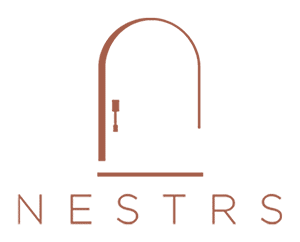
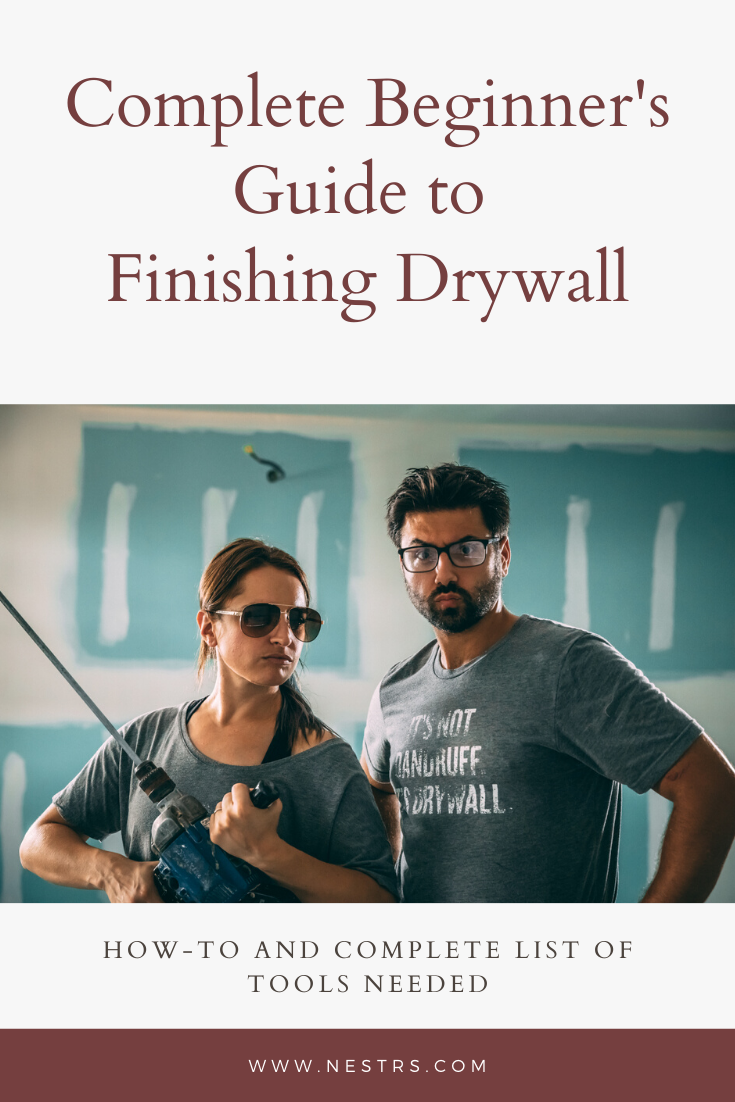
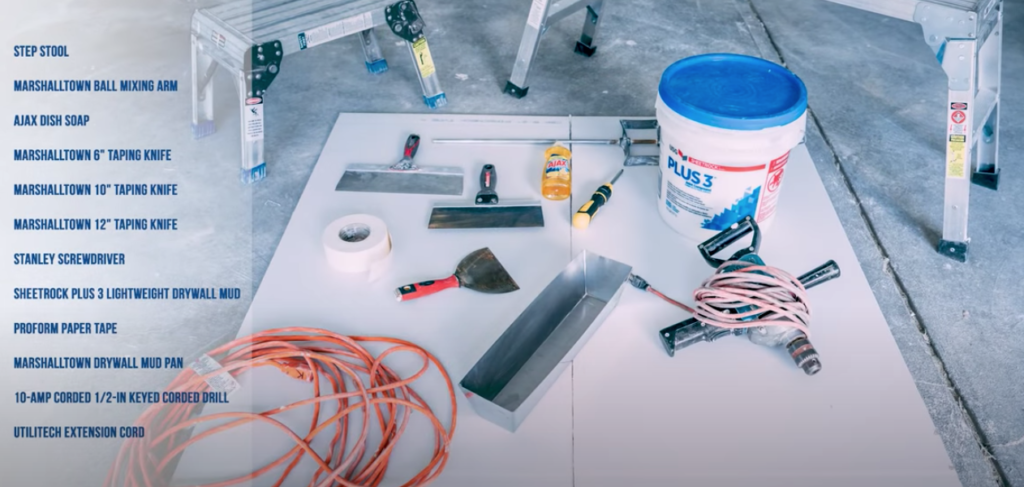
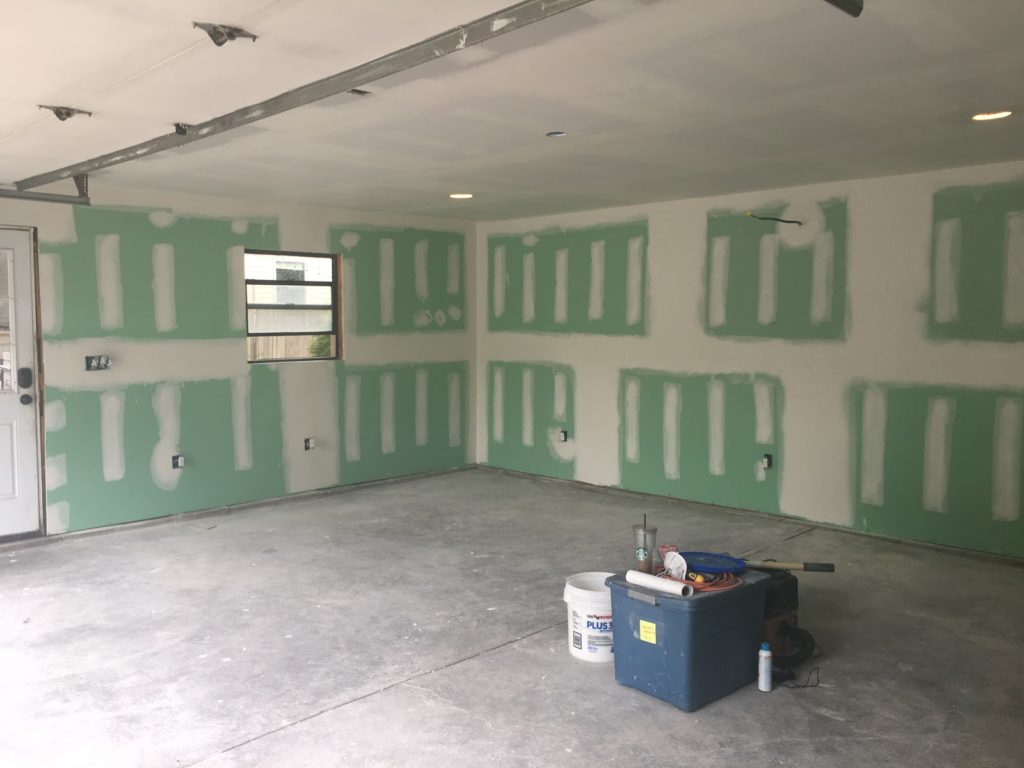
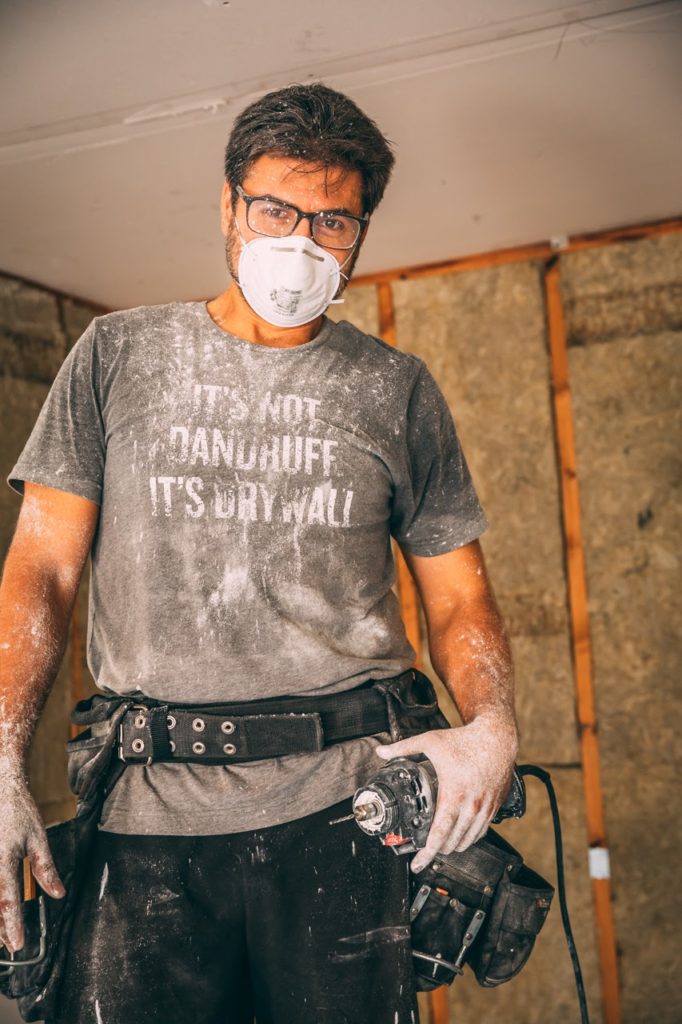
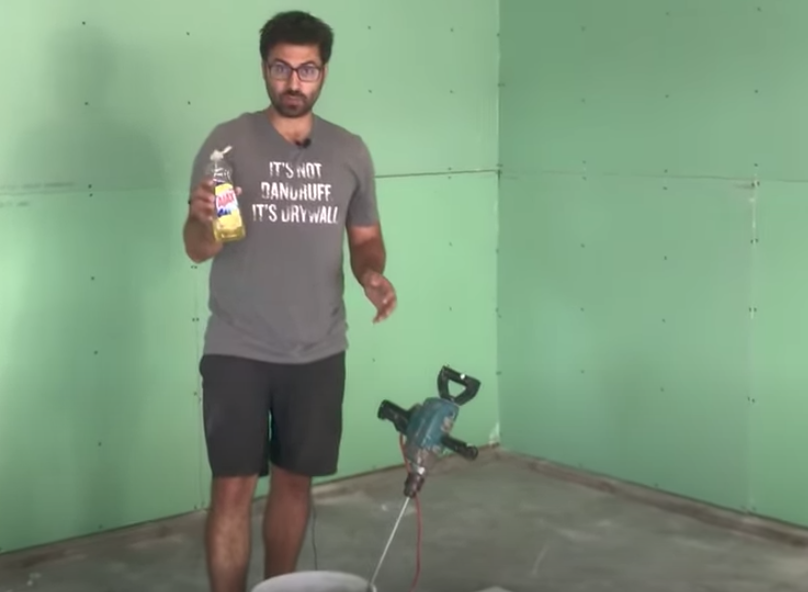
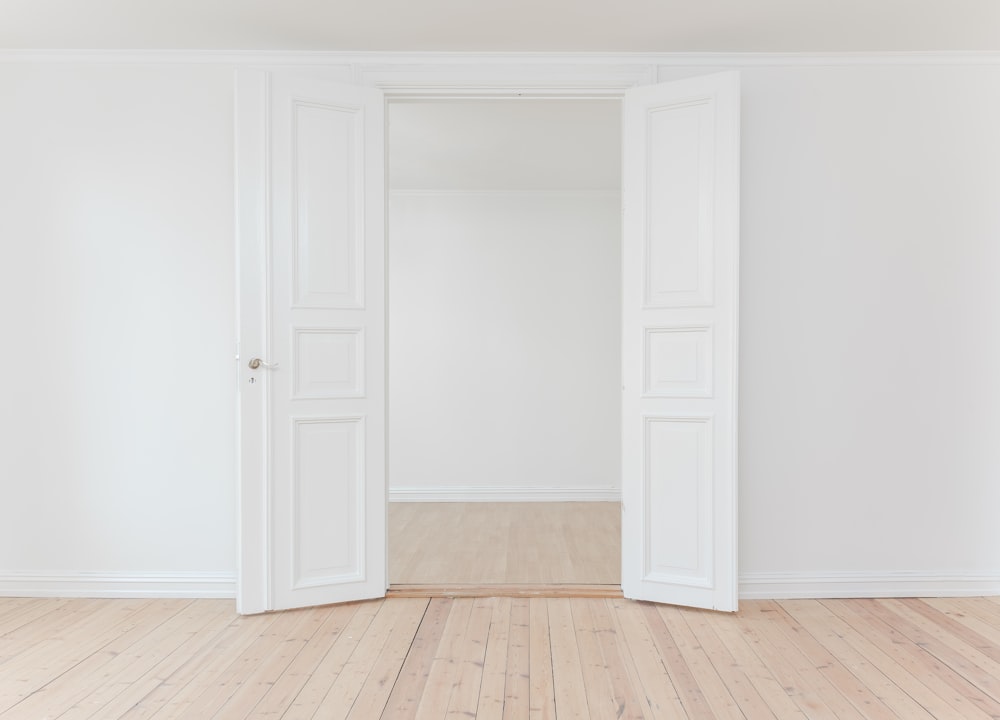
No Comments